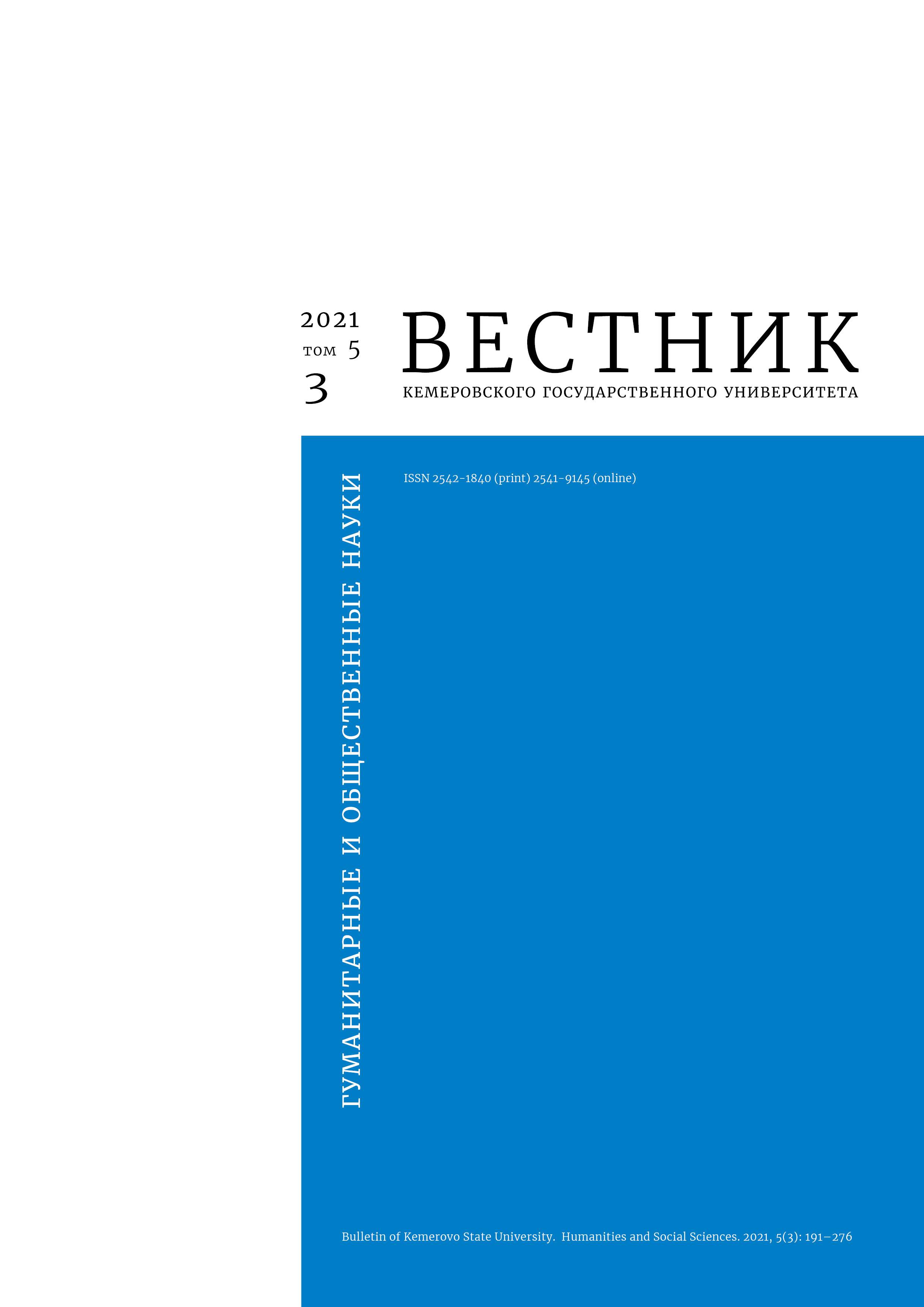Kemerovo, Russian Federation
Kemerovo, Russian Federation
Kemerovo, Russian Federation
Tomsk, Russian Federation
The article introduces a methodological approach to teaching English as a second language (ESL) to schoolchildren with general speech underdevelopment and identifies the main interlingual influences. The research featured various means that optimize the English language acquisition by schoolchildren with general speech underdevelopment. The research objective was to identify and substantiate the optimal methodological tools that take into account interlanguage influences. The study revealed the causes of the poor native grammar skills in this group of schoolchildren. A longitudinal study of interlingual influences made it possible to define several methodological tools that are able to improve the process of ESL acquisition by schoolchildren with general speech underdevelopment. These tools take into account the native vocabulary skills in children of this category. The authors propose to create additional adapted ESL syllabuses for schoolchildren with general speech underdevelopment. Such programs should be based on the peculiarities of the native vocabulary and grammar development in this category of children.
interlanguage influences, vocabulary system, grammar, methodological tools, adapted syllabus
1. Levina R. E. Pedagogical issues of speech pathology in children. Spetsialnaia shkola, 1967 (2): 121-130. (In Russ.)
2. Orfinskaia V. K. Comparative analysis of speech disorders in aphasia and alalia. Dr. Ped. Sci. Diss. Abstr. Leningrad, 1960, 26. (In Russ.)
3. Speech disorders in children and adolescents, ed. Liapidevskii S. S. Moscow: Meditsyna, 1969, 288. (In Russ.)
4. Traugott N. N. Violations of the interaction of signaling systems in some acute pathological conditions of the brain. Moscow-Leningrad: AN SSSR, 1957, 224. (In Russ.)
5. Florenskaia Iu. A. Selected works on speech therapy. Moscow: AST; Astrel, 2006, 223. (In Russ.)
6. Filicheva T. B., Tumanova T. V., Chirkina G. V. Education and training of preschool children with general speech underdevelopment: program and methodological recommendations, 2nd ed. Moscow: Drofa, 2010, 189. (In Russ.)
7. Yeletskaya O. V., Shchukin A. V., Shchukina D. A. Diagnostic model for studying violations of spelling competence in schoolchildren with various variants of dysontogenesis. Koncept, 2016, (T13): 16-20. (In Russ.)
8. Leontyev A. A. Psychophysiological mechanisms of speech. General linguistics. Forms of existence, functions, and history of language, ed. Serebrennikov B. A. Moscow: Nauka, 1970, 314-370. (In Russ.)
9. Voeikova M. D. Assimilation of the first and second languages: similarities and differences. Path to language: Monolingualism and bilingualism, ed. Tseitlin S. N., Eliseeva M. B. Moscow: Iazyki slavianskikh kultur, 2011, 17-20. (In Russ.)
10. Zhukova N. S., Mastiukova E. M., Filicheva T. B. Speech therapy. Overcoming the general underdevelopment of speech in preschoolers. Ekaterinburg: Litur, 2003, 320. (In Russ.)
11. Fairushena V. Kh. Teaching English to children with speech disorders. Available at: https://infourok.ru/obuchenie-anglijskomu-yazyku-uchashihsya-s-tnr-5079859.html (accessed 20 Sep 2021). (In Russ.)
12. Gagarina N. V. Errors in the use of verb forms when children learn Russian. Vestnik Leningradskogo gosudarstvennogo universiteta imeni A. S. Pushkina, 2008, 1(4-1): 152-167. (In Russ.)
13. Akhapkina Ya. E. Reasons and mechanisms of academic writing mistakes made by native Russian speakers. Educational Studies Moscow, 2013, (3): 65-91. (In Russ.) https://doi.org/10.17323/1814-9545-2013-3-65-91
14. Kruglyakova T. A. The mistakes of preschoolers in the perception of poems. Logoped v detskom sadu, 2007, (5): 39-44. (In Russ.)
15. Tribushinina E., Dubinkina-Elgart E., Rabkina N. Can children with DLD acquire a second language in a foreign-language classroom? Effects of age and cross-language relationships. Journal of Communication Disorders, 2020, 88. https://doi.org/10.1016/j.jcomdis.2020.106049
16. Dunn L. M., Dunn D. M. Peabody Picture Vocabulary Test, 4th ed. 2007, 68.
17. Fotekova T. A., Akhutina T. V. Diagnostics of speech disorders in schoolchildren using neuropsychological methods. Moscow: ARKTI, 2002, 136. (In Russ.)
18. Kenny N., Luque-Mortimer L. First certificate practice tests plus with key. Longman, 2008, 176.
19. Isenina E. I. The initial period of speech development in children. Voprosy psikhologii, 1987, (2): 104-112. (In Russ.)
20. Tribushinina E. S. Adverbs of degree in Dutch children's speech. Problems of ontolinguistics - 2009: Proc. Intern. Conf., St. Petersburg, 17-19 Jun 2009. St. Petersburg: Zlatoust, 2009, 305-307. (In Russ.)
21. Ringblom N., Karpova S. V. Narratives of bilingual children in Sweden and Cyprus. Izvestiya Rossiyskogo gosudarstvennogo pedagogicheskogo universiteta im. A. I. Gertsena, 2018, (189): 141-153. (In Russ.)
22. Zalevskaya A. A. Psycholinguistic portraiture of vocabulary: experimental research experience. Psycholinguistic research: word and text, ed. Zalevskaya A. A. Tver: TGU, 1995, 38-46. (In Russ.)
23. Negnevitskaia E. I. Foreign language for the youngest: yesterday, today, and tomorrow. Inostrannye iazyki v shkole, 1987, (6): 27-32. (In Russ.)
24. Vlasenko I. T. Features of verbal thinking of adults and children with speech disorders. Moscow: Pedagogika, 1990, 184. (In Russ.)






















